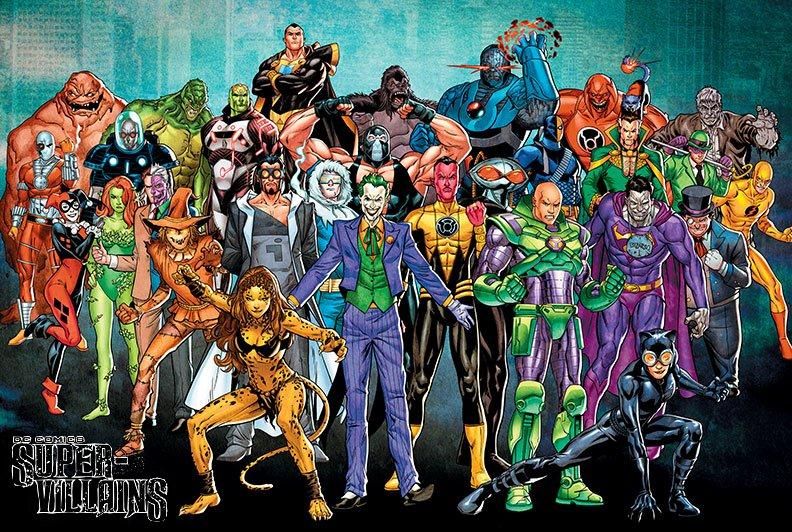While I would generally applaud efforts by comics publishers to reach young readers, the newly announced "DC Comics Super-Villains" program strikes me as more than a little tone deaf.
To celebrate October, "the spookiest time of the year," DC Entertainment is introducing kids to the bad guys of the DC Universe with a multi-platform “Know Your Super-Villains" campaign that includes a mini-poster (above), an online quiz, "Who's Who"-type guides in the DC Nation comics, a contest and the release of the DC Comics Super-Villains: The Joker’s Last Laugh DVD collection.
Never mind the Aaron Lopresti poster, which features a mishmash of villains from different eras, from early-'80s Lex Luthor to New 52 Darkseid (admit it, you went straight to continuity concerns). My question is, aside from extra website traffic and some DVD sales, what's the purpose of this campaign?
DC publishes just five titles geared specifically to kids -- Superman Family Adventures, Green-Lantern: The Animated Series, Scooby-Doo, Where Are You?, DC Nation and Young Justice -- with the bulk of its output targeting a decidedly adult audience. That's not a criticism, or a longing for comics to revert to the way they were when I was a child; it's just a statement of fact. They're comics where a hero impales his opponent with a trident, a villain has his face removed (only to later reattach it), and a costumed blue kitty vomits blood. They're also where readers, both children and adults, are most likely to find most of those 30-odd villains showcased in the platform (albeit in different costumes).
After kids check out the villain secret files using their DC Nation app and take the personality quiz to see which supervillain they're most like -- the homicidal maniac? the ruthless dictator? the killer for hire? -- then what? Although some of those villains show up in radically different (i.e., "safer") form in DC's all-ages books, what we see in that poster are the DC Universe versions, even if they're not all exactly up to date. And, let's face it, by and large the DCU isn't suitable for children. So at the end of the month, once Little Steve has become obsessed with Dex-Starr and Little Vicki wants to find out more about Deathstroke, where do they go? Certainly not to the local comic shop, where a casual flip-through of their adventures would lead parents to determine rather quickly that those issues probably aren't right for their 10-year-old.
It's by no means a new problem; there's long been a disconnect between the characters DC and Marvel license for toothbrushes, sneakers and Underoos and the versions that actually appear in their books. But with its "Super-Villains," DC appears to be driving kids toward its expansive comic-book universe despite not having much for them to choose from once they get there.

